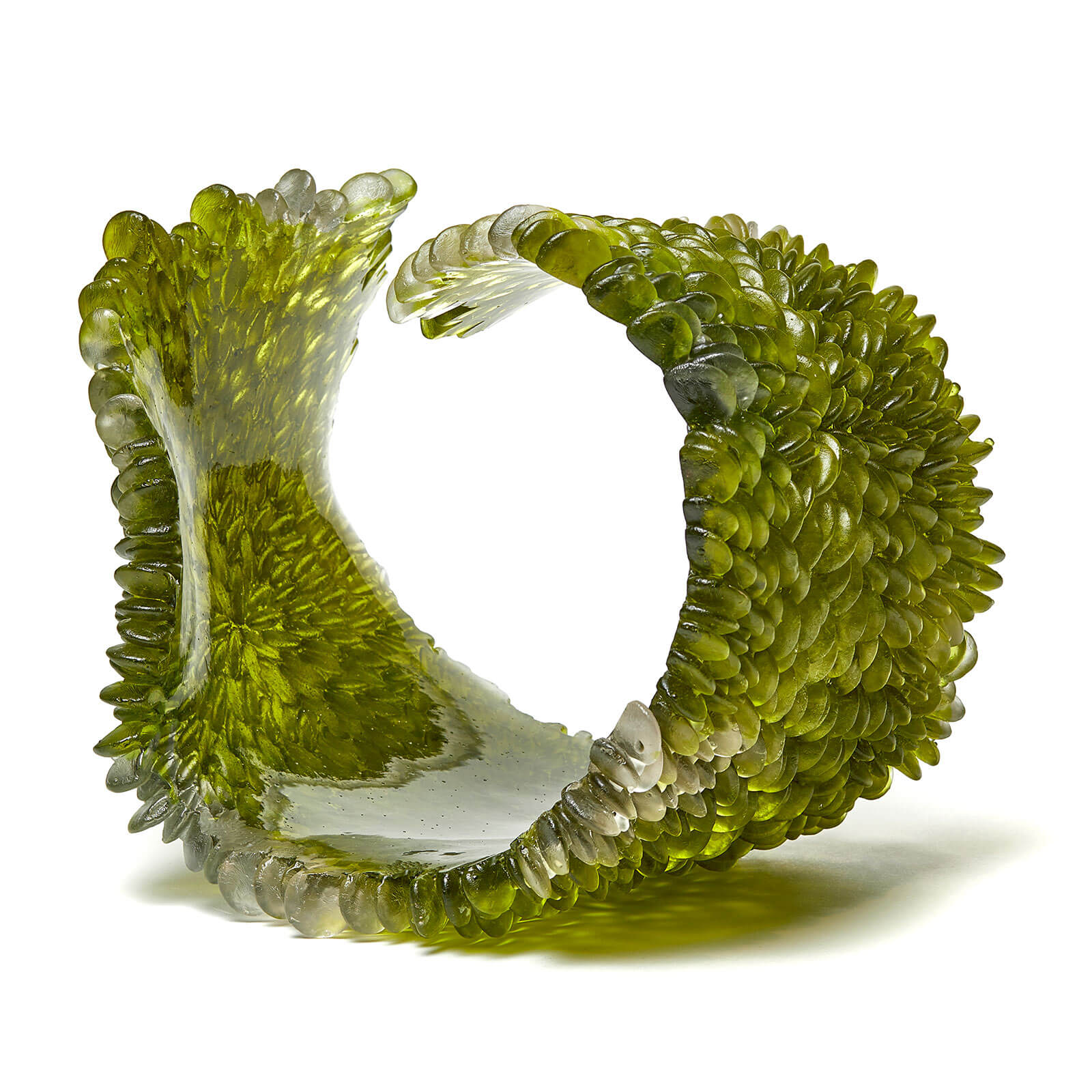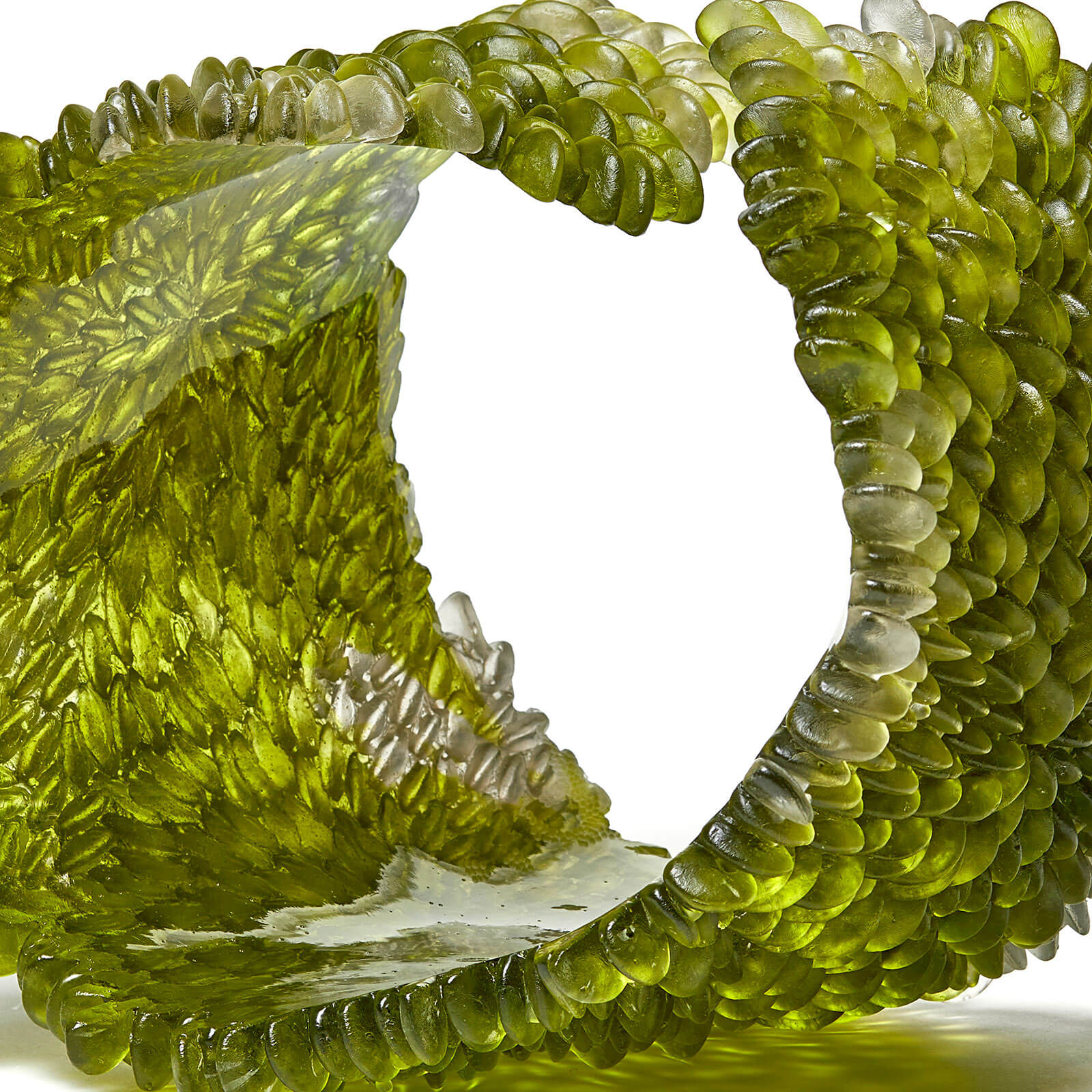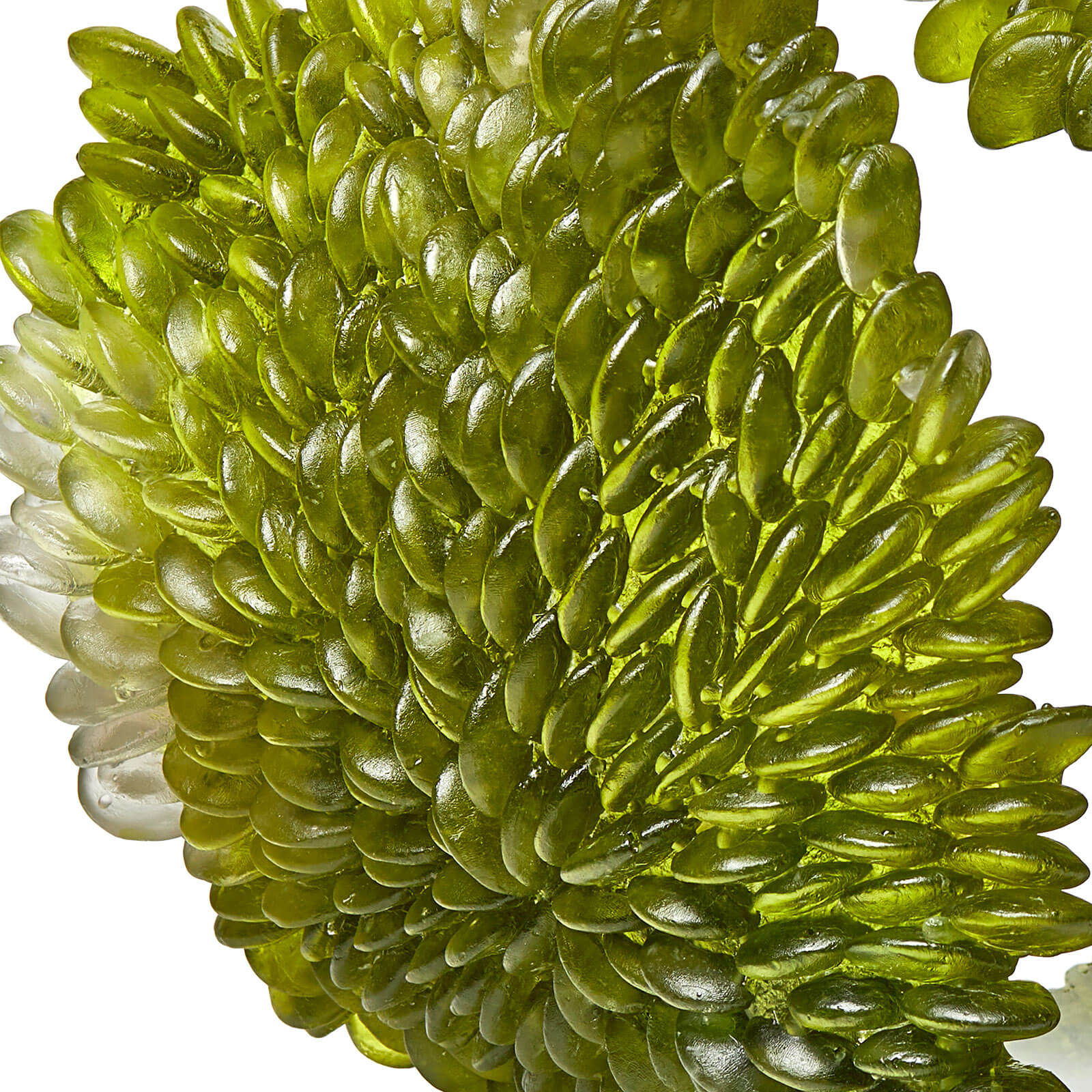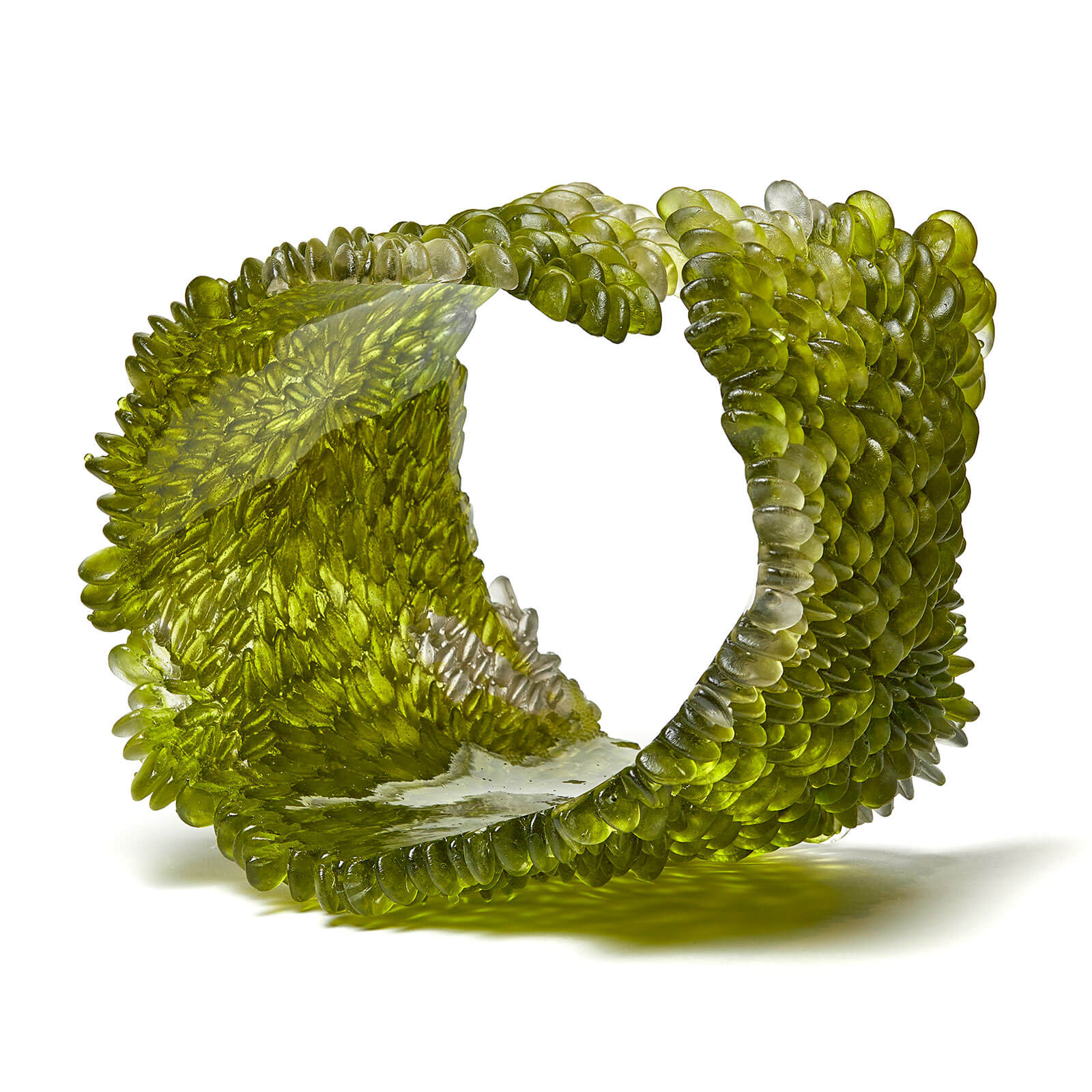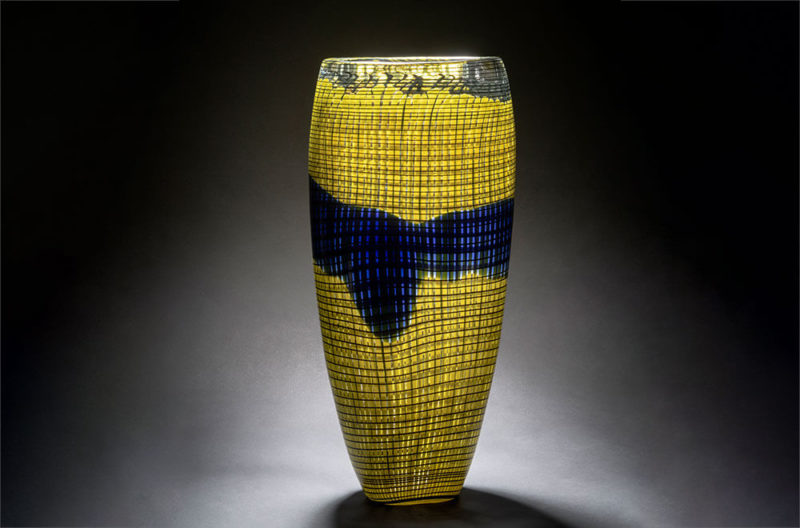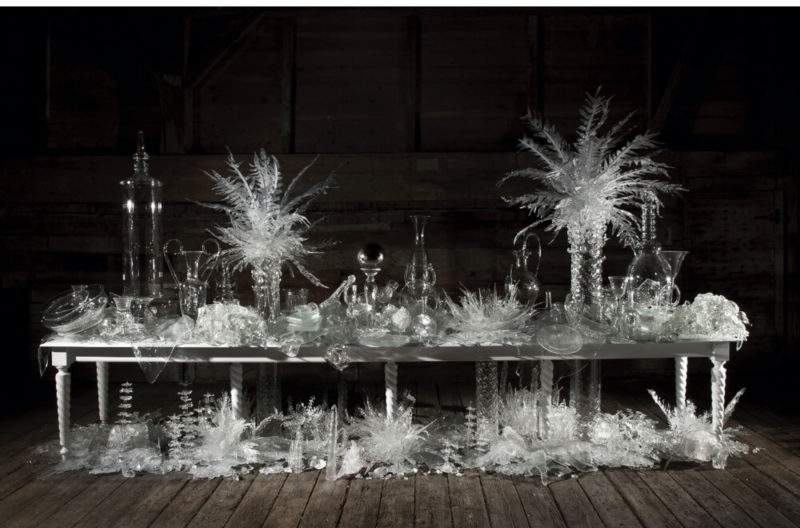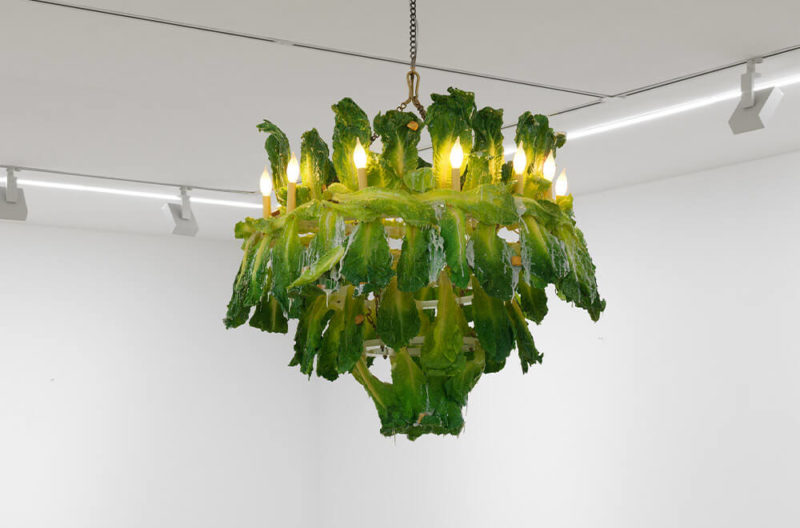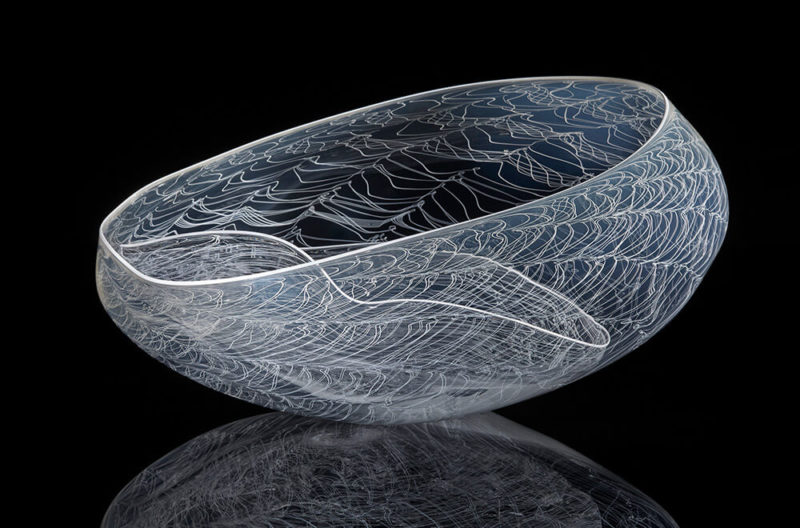‘Spring Greens’, 2021
Nina Casson McGarva
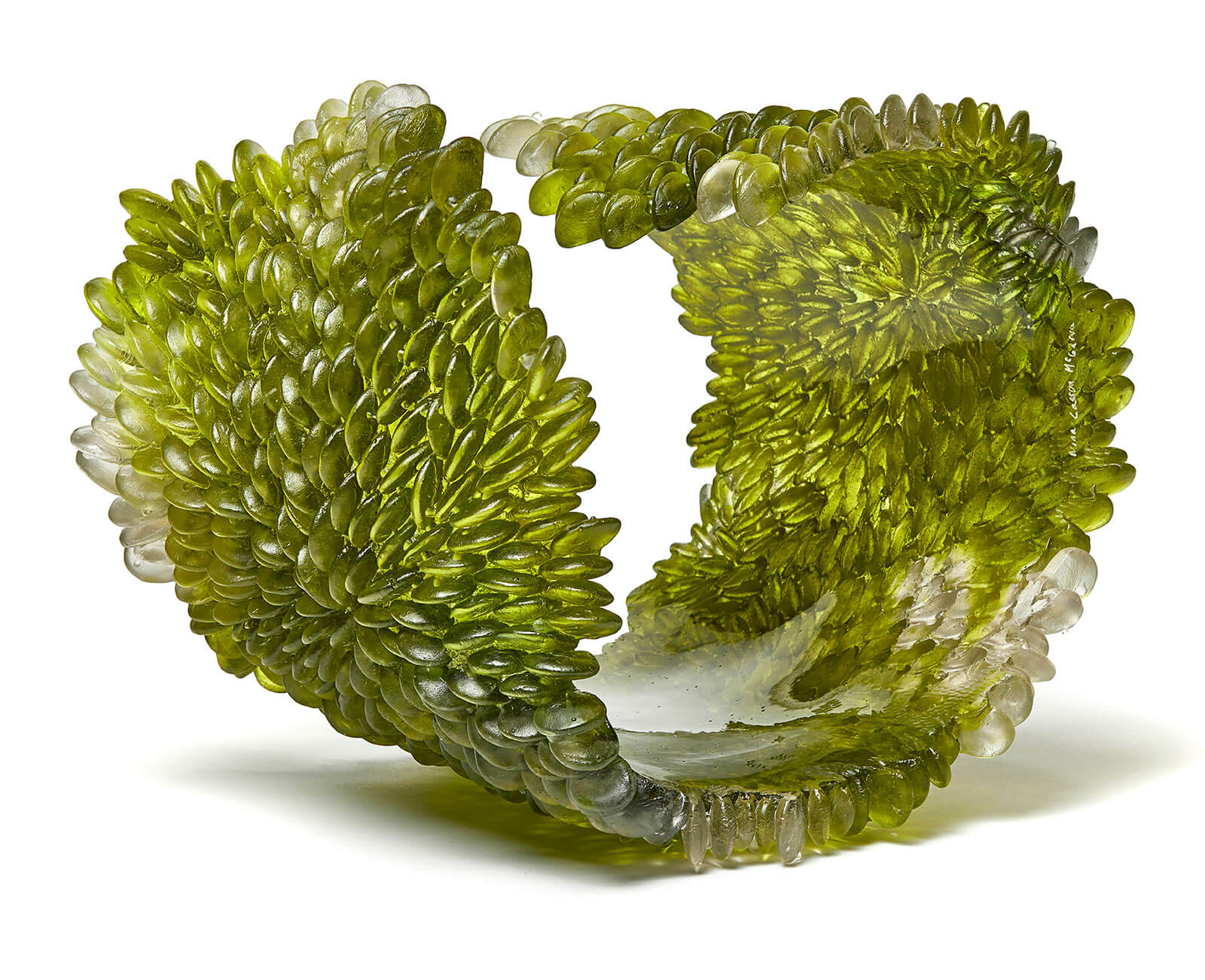
Nina Casson McGarva, ‘Spring Greens’, 2021
COURTESY: Vessel Gallery / PHOTOGRAPH: Agata Pec
THIS SHIMMERING ABSTRACT sculpture, made from cast and hot-worked glass, is the work of Nina Casson McGarva. Created during this year’s series of lockdowns, as she worked in isolation in the Wye Valley in Wales, it seems to have captured and distilled the entire spring season. The weighty sculpture curls upwards with the delicacy of a single leaf, ruffled by the wind; simultaneously it evokes the springtime of the whole surrounding woodland, with its glowing, dappled canopy of translucent foliage. It is one of a whole series of works the artist is showing in her first solo exhibition with Vessel Gallery in London, ‘Formed from Instinct’, which runs until 27th August 2021.
Casson McGarva has a particularly intimate relationship with nature. Born in the UK, she spent most of her childhood in rural Burgundy. Her entire family are craftspeople, from her maternal grandparents, both potters, who founded the Wobage Craft Farm Workshops craft community in the Wye Valley, where she now has a studio, to her father, Andrew McGarva, also a potter, and her mother, Clare Casson, a textile artist. Her French childhood was spent in the countryside, out and about around her home, with many hours in her father’s studio, making pots and modelling. After four years at the École Nationale du Verre at the Lycée Jean Monnet, learning to blow glass, Casson McGarva moved to the renowned Glass and Ceramics Workshop on Bornholm, part of the Royal Danish Academy of Fine Arts. Here she began to experiment more freely with other techniques, such as kiln casting. Residencies at Pilchuck Glass School and at STARworks Glass Lab, North Carolina, followed by internships, have enabled her to explore the gamut of techniques from blowing to cold-working. But always nature has remained as an inspiration: its processes, as well as its forms and colours.
Casson McGarva has pioneered her own technique. She begins by making hundreds of elliptical wax beads, reminiscent of seeds, which she then imprints on a plaster mould. After steaming the wax out, she covers the mould with ground or billeted glass, which then melts and runs into the mould in the kiln. The shape of the beads creates the pebbly surface underneath, while the top surface is smooth. After the glass has cooled, Casson McGarva puts it back in the kiln just long enough to make it pliable. Then comes the dramatic moment of pulling the piece from the kiln and quickly shaping the form, twisting and curving, with the beads on the outside and the smooth side within, working by instinct, before it can crack.
The artist says, “I like the contrast between the control that I have at the kiln-forming stage, and the spontaneity of the hot-working, where I guide the material, but the thickness, colour, temperature and gravity all exert their own influence. Sometimes, my initial idea is realised in an unexpected way.” The spontaneity of this final stage of her process is what gives this piece such life and energy.
-
Nina Casson McGarva, ‘Spring Greens’, 2021
COURTESY: Vessel Gallery / PHOTOGRAPH: Agata Pec
-
Nina Casson McGarva, ‘Spring Greens’, 2021 (detail)
COURTESY: Vessel Gallery / PHOTOGRAPH: Agata Pec
-
Nina Casson McGarva, ‘Spring Greens’, 2021 (detail)
COURTESY: Vessel Gallery / PHOTOGRAPH: Agata Pec
-
Nina Casson McGarva, ‘Spring Greens’, 2021
COURTESY: Vessel Gallery / PHOTOGRAPH: Agata Pec
Nina Casson McGarva at work in her studio
COURTESY: Vessel Gallery / FILM: Moss Davis
